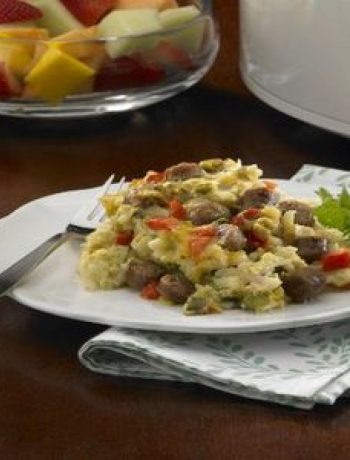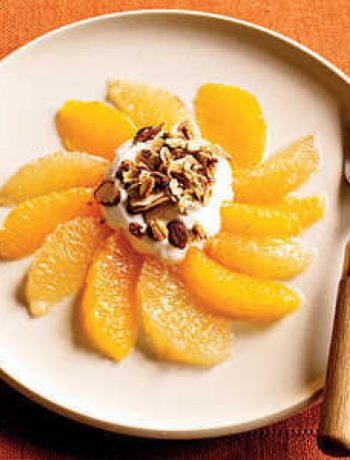TipHow to Store Eggs
Eggs should keep a consistent and low temperature. This is best achieved by placing their carton in the center of your fridge. The eggs should also remain in their original packaging to avoid the absorption of strong odors. It is wise to follow the “best by” date to determine overall freshness, but eggs can be tested by simply dropping them into a bowl of water. Older eggs will float while fresh eggs will sink. This is due to the size of their air cells, which gradually increase over time. Cooked eggs have a refrigerator shelf life of no more than four days, while hard-boiled eggs, peeled or unpeeled, are safe to consume up to one week after they’re prepared.
Read More
1 of 9
Next: How to Cook Eggs
TipHow to Cook Eggs
The beauty of an egg is its versatility. Eggs can be cooked in a variety of ways. Here are some tips in accomplishing the four most common preparations. Scrambled: Whip your eggs in a bowl. The consistency of your scrambled eggs is a personal preference, though it seems like the majority of breakfast connoisseurs enjoy a more runny and fluffy option. In this case, add about ¼ cup of milk for every four eggs. This will help to thin the mix. Feel free to also season with salt and pepper (or stir in cream cheese for added decadence). Grease a skillet with butter over medium heat and pour in the egg mixture. As the eggs begin to cook, begin to pull and fold the eggs with a spatula until it forms curds. Do not stir constantly. Once the egg is cooked to your liking, remove from heat and serve. Hard-boiled: Fill a pot that covers your eggs by about two inches. Remove the eggs and bring the water to a boil. Once the water begins to boil, carefully drop in the eggs and leave them for 10-12 minutes. For easy peeling, give the eggs an immediate ice bath after the cooking time is completed. For soft-boiled eggs, follow the same process, but cut the cooking time in half. Poached: Add a dash of vinegar to a pan filled with steadily simmering water. Crack eggs individually into a dish or small cup. With a spatula, create a gentle whirlpool in the pan. Slowly add the egg, whites first, into the water and allow to cook for three minutes. Remove the egg with a slotted spoon and immediately transfer to kitchen paper to drain the water. Sunny Side Up/Over Easy/Medium/Hard: For each of these preparations, you are cracking an egg directly into a greased frying pan. For sunny side up, no flipping is involved. Simply allow the edges to fry until they’re golden brown. To achieve an over easy egg, flip a sunny side up egg and cook until a thin film appears over the yolk. The yolk should still be runny upon serving. An over medium egg is flipped, fried, and cooked longer until the yolk is still slightly runny. An over hard is cooked until the yolk is hard.
Read More
2 of 9
Next: How to Freeze Eggs
TipHow to Freeze Eggs
Eggs can easily be frozen, but instructions vary based on the egg’s physical state. As a general rule, uncooked eggs in their shells should not be frozen. They must be cracked first and have their contents frozen. Uncooked whole eggs: The eggs must be removed from their shells, blended, and poured into containers that can seal tightly. Uncooked egg whites: The same process as whole eggs, but you can freeze whites in ice cube trays before transferring them to an airtight container. This speeds up the thawing process and can help with measuring. Uncooked yolks: Egg yolks alone can turn extremely gelatinous if frozen. For use in savory dishes, add ⅛ teaspoon of salt per four egg yolks. Substitute the salt for sugar for use in sweet dishes and/or desserts. Cooked eggs: Scrambled eggs are fine to freeze, but it is advised to not freeze cooked egg whites. They become too watery and rubbery if not mixed with the yolk. Hard-boiled eggs: As mentioned above, it is best to not freeze hard-boiled eggs because cooked whites become watery and rubbery when frozen.
Read More
3 of 9
Next: Why Do We Celebrate Christmas on Dec. 25?
TipWhy Do We Celebrate Christmas on Dec. 25?
There are several reasons Christmas is celebrated on Dec. 25. The date is nine months after March 25, a day recognized by Christians as Annunciation. It was the day Mary was told she would was having a baby. The nine months that follow are an approximation of Jesus’ birth. Dec. 25 also coincides with pagan Winter Solstice celebrations like Saturnalia’ and Dies Natalis Solis Invicti. Since they were historically celebrated around that time of year there was precedent for holiday festivities during this time of year.
Read More
4 of 9
Next: What Does the Name ‘Christmas’ Mean and What Is the Meaning of Christmas?
TipWhat Does the Name ‘Christmas’ Mean and What Is the Meaning of Christmas?
Christmas is a shortened from the words “Christ’s mass.” It’s derived from the Middle English word “Cristemasse” which has Greek, Hebrew and Latin origins. Christmas is an annual holiday that honors the birth of Jesus Christ. It is celebrated by Christians around the world and is regarded as an important religious and cultural holiday.
Read More
5 of 9
Next: How Can We Celebrate Christmas?
TipHow Can We Celebrate Christmas?
Christmas is traditionally celebrated in many ways and celebrations vary across cultures. In the days leading up to Christmas, people usually put up special decorations including colorful lights and evergreen trees. Gifts are often placed under the tree and exchanged on Christmas day among loved ones. Large meals are also typically served as part of the celebration as well.
Read More
6 of 9
Next: How to Store Fresh Sausage
TipHow to Store Fresh Sausage
Fresh sausage must be consumed or frozen within one to two days of purchase. They can be stored in their original packaging, but refrain from opening the package until you’re ready to cook. The easiest way to tell if a sausage has gone bad is its smell. Discard of anything that smells foul.
Read More
7 of 9
Next: How to Freeze Fresh Sausage
TipHow to Freeze Fresh Sausage
Sausage can be kept in its original packaging, but re-wrapped in aluminum foil, plastic wrap, or freezer paper to prevent freezer burn. A frozen fresh sausage’s optimal flavor will last one to two months beyond its initial freeze date, though properly packaged sausage can last significantly longer.
Read More
8 of 9
Next: How to Cook Fresh Sausage
TipHow to Cook Fresh Sausage
To cook sausage in its traditional form (whole and with casing), spray a skillet with cooking spray and set the heat to medium-high. Add the sausages and allow their sides to brown. Continuously flip the sausages with tongs until they are browned evenly. Lower heat to medium-low and carefully had half a cup of water to the skillet. Cover the sausages and allow to simmer in the water for 12 minutes or until the they are cooked through.
Read More
9 of 9
Next: How to Store Eggs
Making a filling breakfast for a bunch of people can be hard to swing, so we made it easy by putting everything into a casserole. Just whisk together a dozen eggs, milk, and a touch of mustard, then add cheddar and Jack cheese, sourdough bread cubes, and browned breakfast sausage. Dump the mixture into a big casserole dish and let it sit in the refrigerator overnight. The next morning all you have to do is put it in the oven, and in less than an hour, you’re ready to eat. Game plan: The assembled casserole needs to soak overnight before baking, so plan accordingly.
Ingredients:
- 1 tablespoon vegetable oil
- 1 pound uncooked pork breakfast sausage, casings removed
- 12 large eggs
- 2 1/2 cups whole milk
- 2 teaspoons ground mustard, such as Colman’s
- 1 teaspoon kosher salt
- 1/2 teaspoon freshly ground black pepper
- 6 ounces French or sourdough baguette, cut into 3/4-inch cubes (about 5 1/2 cups)
- 3/4 cup shredded sharp cheddar cheese (about 2 ounces)
- 3/4 cup shredded Monterey Jack cheese (about 2 1/2 ounces)
Instructions:
- 1Heat the oil in a large frying pan over medium heat until shimmering. Add the sausage and cook, breaking up the meat into smaller pieces with a wooden spoon, until it’s no longer pink and is starting to brown, about 10 minutes. Remove the pan from the heat and let it cool for 10 minutes.
- 2Place the eggs in a large bowl and whisk until they’re broken up. Add the milk, mustard, salt, and pepper and whisk to combine. Add the reserved sausage, bread, and cheeses and stir to combine. Pour the mixture into a 13-by-9-inch baking dish and spread it into an even layer. Cover the dish with plastic wrap or aluminum foil and refrigerate overnight.
- 3When ready to bake the casserole, heat the oven to 350°F and arrange a rack in the middle. Meanwhile, remove the casserole from the refrigerator and let it sit at room temperature.
- 4Uncover the casserole and bake until a toothpick inserted into the center comes out clean, about 45 to 55 minutes. Remove the pan to a wire rack and let it cool for 10 minutes before serving.
- Share on Facebook
- Share on Reddit
- Save (435)




No Comments